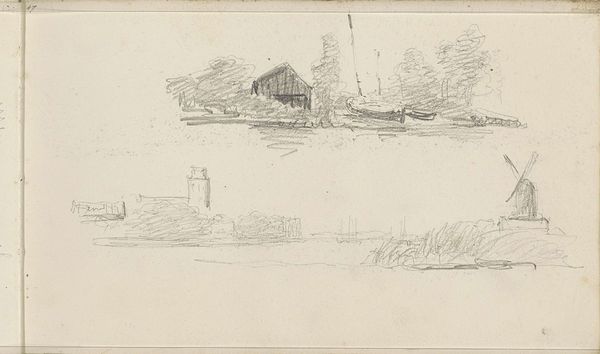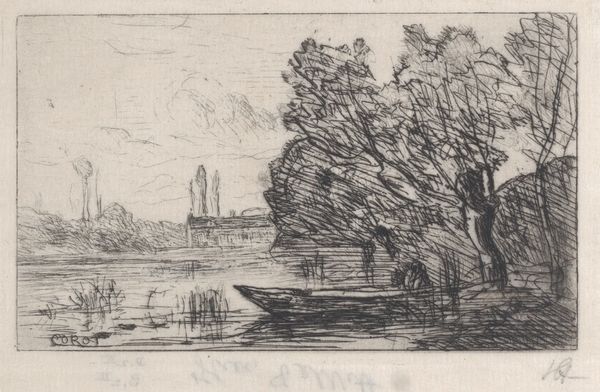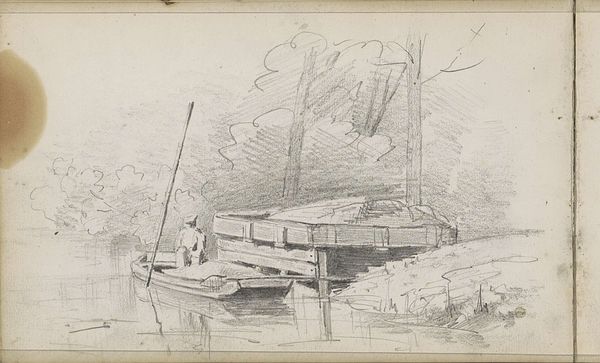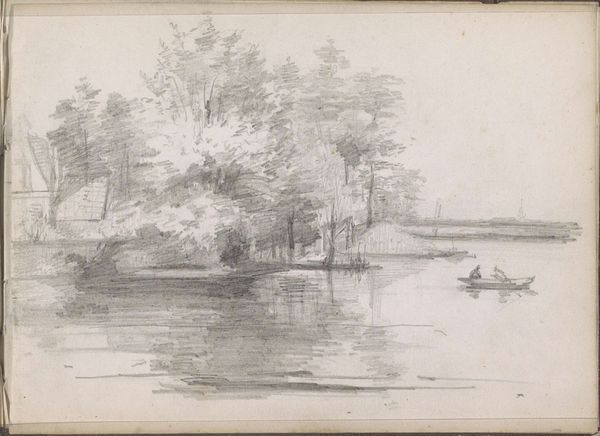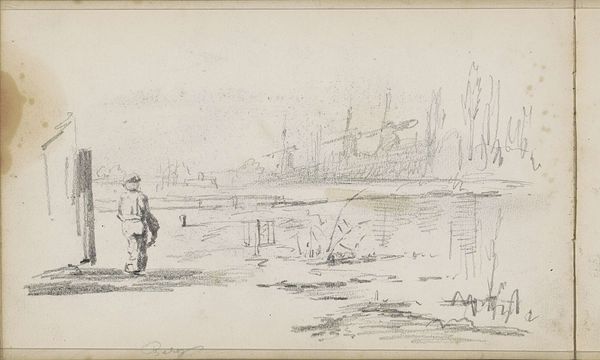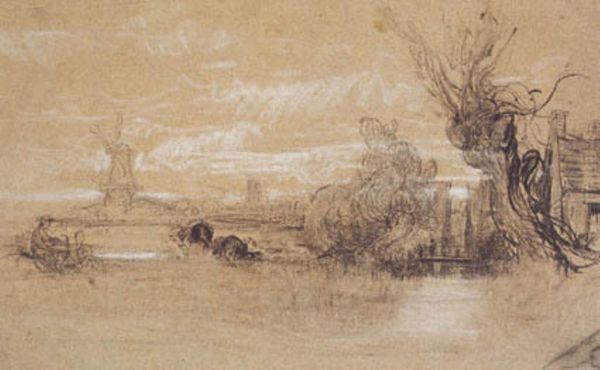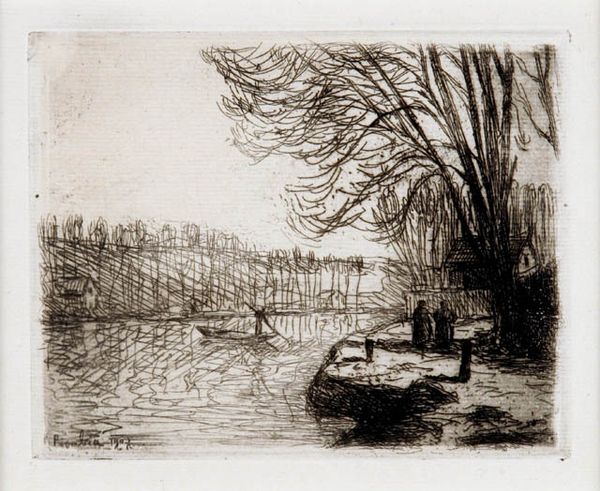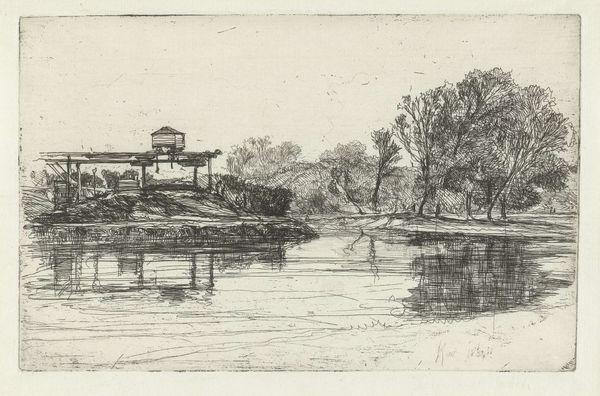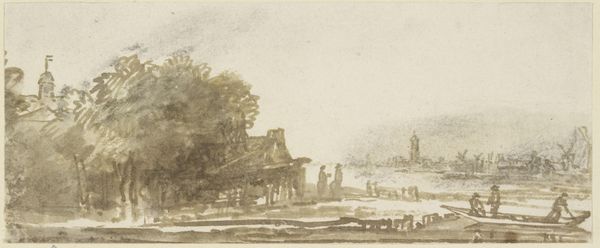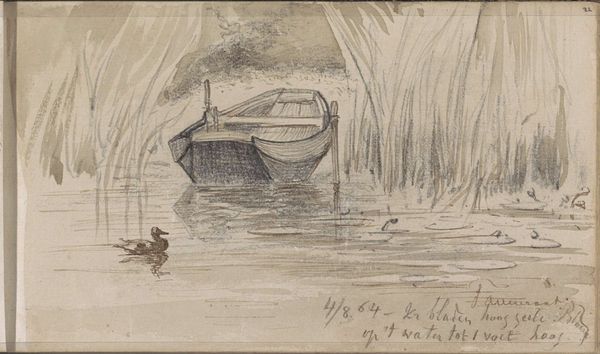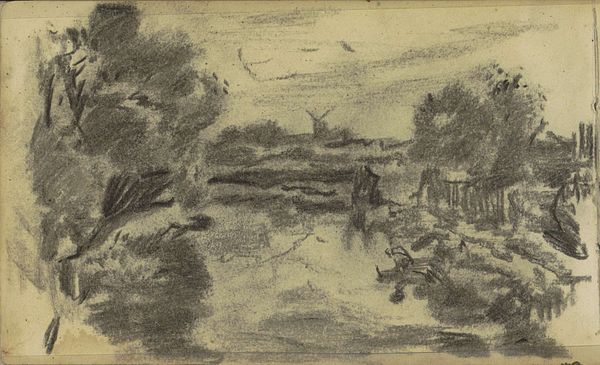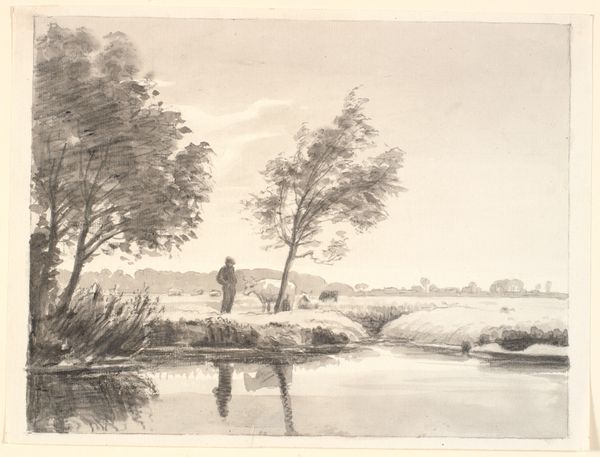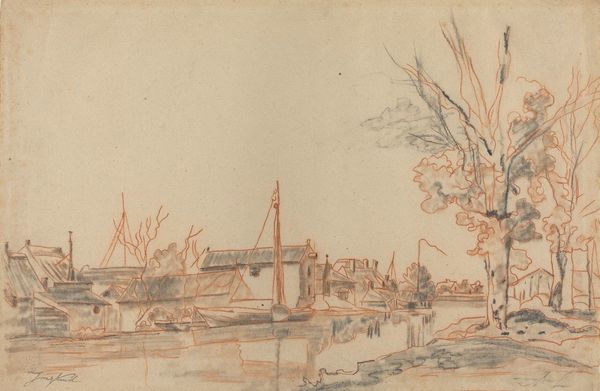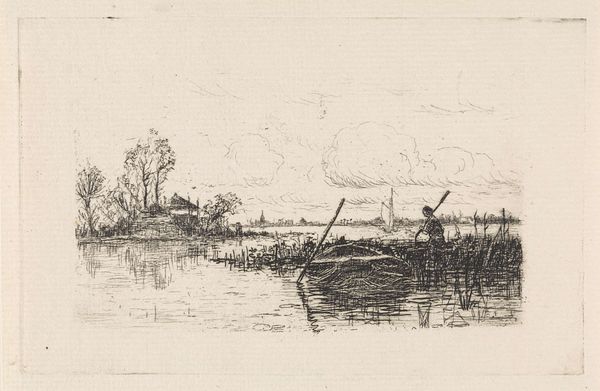
drawing, paper, pencil
#
drawing
#
landscape
#
river
#
paper
#
pencil
#
realism
Copyright: Rijks Museum: Open Domain
Curator: Before us, we have "Houses on a Calm River," a pencil drawing on paper, made sometime between 1834 and 1906 by Maria Vos. It resides here at the Rijksmuseum. Editor: Immediately, the grayness gives it a quiet, almost somber feel. There's a softness, despite the defined structures of the buildings. Curator: Yes, it's a very subtle piece. To understand its significance, we need to consider the artistic conventions of the time, the social values attached to rural life, and the gaze of female artists. What narrative are we supposed to be looking at in art depicting a certain historical time period? It prompts critical questions about gender, artistic representation, and class. Editor: Well, the subject matter alone makes me consider production: paper, pencils… These were relatively accessible materials, so this kind of work opens the doors to all sorts of people. Vos makes great use of reflections in the water. Did that inspire her or constrain her, because light is, of course, fugitive? The materiality of this water seems critical here, right? How to achieve an image of constant flowing flux with, again, a material, static pencil? Curator: Absolutely, considering labor and the ready availability of certain resources like those to Vos is fundamental to appreciating works like these. Perhaps it's how that stillness almost resists, the encroaching industrialization, maybe how these women who worked tirelessly and almost anonymously had something valuable to offer in the art world as well. The quiet resistance is indeed palpable here. Editor: And this is just a small-scale drawing. There isn’t bombast here, is there? Only attentive skill to reflect the surrounding waters, land, and air! It truly resonates, because Vos took advantage of and made sense of material production. Curator: Indeed. It is how art invites dialogue and the re-evaluation of past orthodoxies which allows me to place Vos’ work firmly within today’s critical conversations on representation and identity, to find a sense of purpose when contemplating the making of such material artifacts. Editor: Yes, considering the drawing process itself reveals just as much about the social conditions and, most specifically, the environmental components within it.
Comments
No comments
Be the first to comment and join the conversation on the ultimate creative platform.
